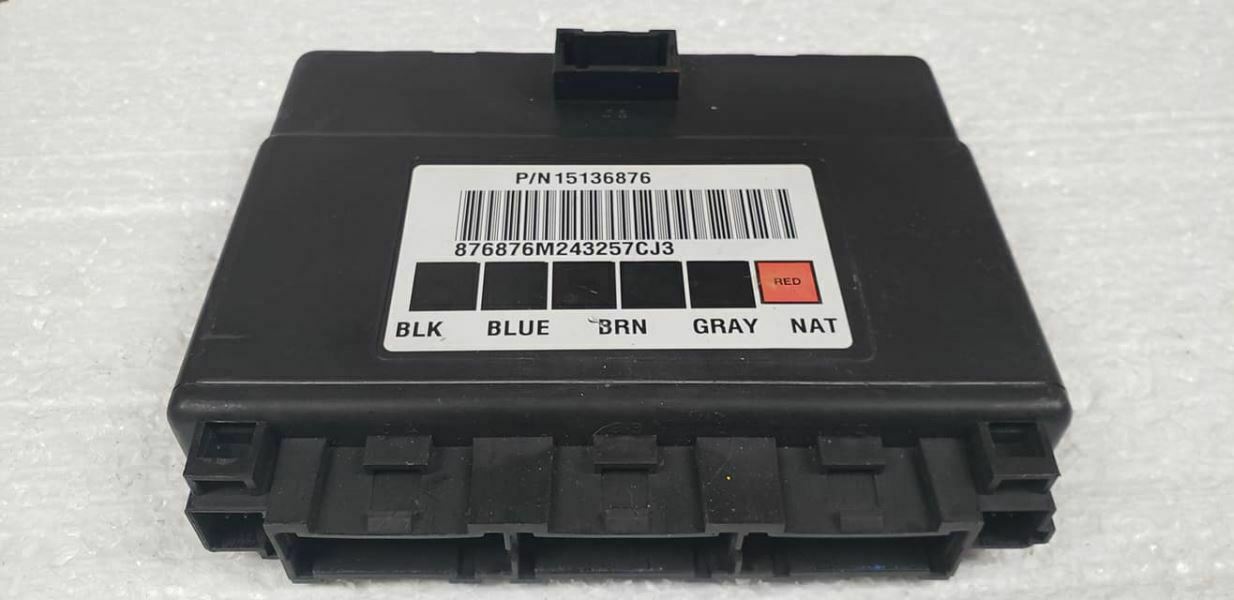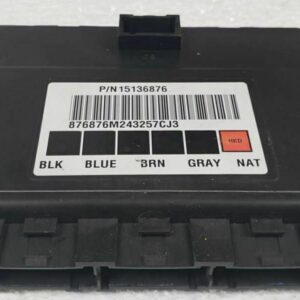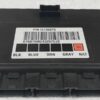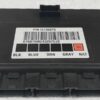Restore Full Functionality to Your GM Truck or Van
Are you dealing with baffling electrical issues in your GM vehicle? Flickering interior lights, power windows that won’t budge, a security light that stays on, or accessories that work intermittently are all classic signs of a failing Body Control Module (BCM). As the central hub for your vehicle’s body electronics, a faulty BCM can make your reliable truck or van feel unpredictable. This isn’t just an annoyance; it can affect vehicle security and safety. Get back in control with this direct-fit, VIN-programmed BCM.
Is Your GM Vehicle Showing These Symptoms?
A failing BCM can cause a wide range of frustrating problems. Over my 20 years in diagnostics, I’ve seen these modules cause some of the most confusing symptoms for vehicle owners. Check if any of these sound familiar:
- ✔ Erratic or non-functional power windows, door locks, and mirrors.
- ✔ Interior or exterior lights that flicker, stay on, or don’t work at all.
- ✔ The security or anti-theft light is illuminated, potentially causing a no-start condition.
- ✔ The horn sounds randomly or doesn’t work when pressed.
- ✔ The radio or instrument cluster display behaves erratically.
- ✔ Diagnostic trouble codes (DTCs) related to communication loss (U-codes) or specific body functions (B-codes) are stored in the system.
Case Study: A Tricky Diagnosis
A customer brought in his 2006 Silverado 2500 with a complaint that was driving him crazy: every time it rained, his interior lights would flicker and his power locks would cycle on their own. He’d already replaced the battery, thinking it was a voltage issue. After a quick inspection, I found the classic culprit. The cowl seal at the base of the windshield had dried out, allowing water to drip directly onto the BCM under the steering column. This slow water intrusion caused corrosion on the circuit board, leading to the bizarre electrical gremlins. Replacing the faulty module with a pre-programmed 2003-2007 GM BCM and fixing the leak provided a permanent, reliable solution.
A Straightforward Guide to Your BCM Installation
Installing your new BCM is a manageable job for a DIYer with basic tools. This module is designed for a direct fit, and because we program it to your VIN, you can skip the expensive trip to the dealership for programming. Just follow these general steps:
- Safety First: Always disconnect the negative terminal from your vehicle’s battery and wait a few minutes to ensure all systems are powered down.
- Locate the BCM: On most Silverado and Sierra pickups, the BCM is located under the driver’s side of the dashboard, near the steering column. On Express and Savana vans, it’s typically behind the center dash panel.
- Remove Trim Panels: Carefully remove any plastic trim or panels necessary to access the BCM. These usually pop off or are held by a few screws.
- Disconnect and Remove: The BCM has several large multi-pin electrical connectors. Carefully press the release tabs and pull the connectors straight out. Once disconnected, unbolt or unclip the module from its mounting bracket.
- Install the New BCM: Mount the new module in the same location and securely re-attach all electrical connectors. You should hear a ‘click’ as they lock into place.
- Final Steps: Re-install the trim panels and reconnect the negative battery terminal. Your vehicle is now ready for the key cycle and any necessary relearn procedures.
What to Expect After Installation
Because this module is central to many systems, a couple of simple procedures may be needed after installation to ensure everything communicates correctly. Don’t worry, this is normal.
- Airbag System Sync: In some cases, the airbag warning light may illuminate after the BCM is replaced. This is a communication mismatch. A professional scan tool is needed to perform the ‘Setup SDM Primary Key in BCM’ function to sync the modules and clear the light.
- Brake Pedal Position Relearn: A brake pedal position sensor relearn might be required on certain models to ensure your brake lights and stability control systems function correctly. This is also performed with a capable scan tool.
- No Core Charge: We make it simple. There is no core charge for this part. You can keep your old module, saving you the time and hassle of a return shipment.
Verified Vehicle Compatibility
This 2003-2007 GM BCM is a direct replacement for part number 15198115 and interchanges with several other part numbers, including 15167329, 15194169, 15747545, 15136224, 15116065, 15136876, and 10367689. It fits a wide range of GM trucks and vans. Please verify your model and options below:
Chevrolet Silverado & GMC Sierra Pickups (1500/2500/3500): 2003-2007 (incl. ’07 Classic)
Chevrolet SSR: 2003-2006
Note: Specific exclusions apply, such as Crew Cab models or Commercial Tradesman packages for certain years. Please check the detailed list provided in the original data or contact us with your VIN.
Why do I need to provide my VIN?
We require your Vehicle Identification Number (VIN) to program the BCM with the correct software and vehicle-specific options before we ship it. This ensures it works correctly right out of the box, saving you a trip to the dealer.
Is this a difficult part to install myself?
For someone with basic mechanical skills, this is a very manageable installation. The main challenge is accessing the module under the dash. Since it comes pre-programmed, the most complex part of the job is already done for you.
What does a BCM actually do?
The Body Control Module acts as the brain for your vehicle’s body electronics. It controls functions like power windows, power locks, interior lighting, the security system, wipers, and more. When it fails, these systems can become erratic.
Do I have to send my old part back?
No. We do not require a core return for this module. You can keep your original part, which simplifies the process for you.
Will I need special tools after installation?
Possibly. While the module is plug-and-play, some vehicles may require an Airbag System Sync or a Brake Pedal Position Relearn, which must be done with a professional-grade diagnostic scan tool. This is only necessary if you have related warning lights after installation.



